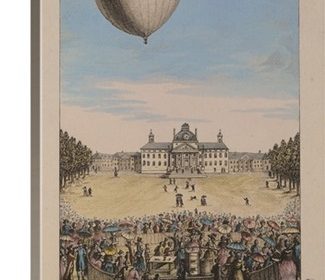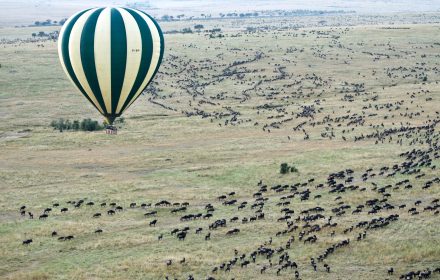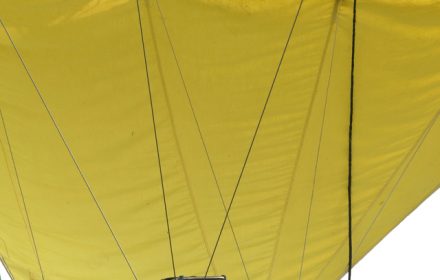Balloon building is a craft century in the making. The invention of one on the 4th June 1783 brings to mind two brothers, both prosperous paper manufacturers, named Joseph-Michel Montgolfier and Jacques-Etienne Montgolfier who made its first forays. They observed that heated air flowing into a fabric bag made it rise. The brothers thought that they had discovered a gas that was lighter than air. In fact, it was merely air, which became buoyant as it was heated. The bag rose because the air within was less dense and lighter than the surrounding atmosphere, which then pushed against the bottom.
Hot-air balloon
Record Breakers In Hotair Balloon Industry On the 27th of August 1783 Jacques-Alexander-Cesar Charles, the French inventor launched a hydrogen balloon. He then went on to design and build a larger hydrogen balloon with the help of two engineering brothers Anne-Jean and Marie-Noel Robert. They included in it most of the…
A typical balloon ride lasts for about an hour. Weather conditions are best just after sunrise and 2 hours before sunset because light winds often occur during these timings. In between those times, when the sun is at its zenith, thermals make ballooning hazardous, although hot-air balloons can withstand temperatures of up to 250°F. But many ask how to maneuvre an hotair balloon. The launch and ground crew consisting of a minimum of four people spends much of the time inflating and deflating the balloon. Duties of the crew include launching, following in the vehicle, and getting permission for landing.
The pioneers of inflatable planes are unsung heroes. Mentions of them are few and far between. But giving credit where it is due is only appropriate. The pioneers of hotair balloons expounded on the buoyancy theory while designing the craft. The credit for hotair balloon invention goes to Jacques-Etienne and Joseph-Michel Montgolfier. They lived in the 18thcentury in Annonay, a town in France. Montgolfiers were paper manufacturers. Legend has it that the brothers took inspiration from watching the skirts of Joseph’s wife. The skirt billowed from the heat of a kitchen burner. Joseph’s wife used the burner to dry clothes.
The basket is the lowest part of the balloon, just underneath the burner. The basket is the compartment that carries the propane gas tank, the pilot, the passengers and other instruments. Baskets come in a variety of shapes and sizes. Some are smaller for private flights, and others are larger for commercial flights. It is also possible to tailor-make the basket to a set specification, from the wall height and width. Perhaps what makes wicker a resilient material would be a good follow-up read or study. If the wicker properties can assure safety in the air, it warrants further study.
The pilot controls an hotair balloon using the temperature inside the envelope. And the burner is the tool that he or she uses to control the temperature. That is why the burner is the engine of the balloon. An increase in the inside temperature sends the flight higher. And a decrease helps it land. In between, the pilot horizontally maneuvers it by catching the air drift at different altitudes. As the industry progresses, the world may have many other types of them. With the advancement of artificial intelligence, there might be a time when the balloon can fly even remotely.
The two important components of the balloon envelope are its fabric and vents. Other ballooning gears facilitate its functioning. During the flight, the pilot is always studying the altitude, pressure, and other aspects using various instruments. Pilots have a tremendous amount of control over the balloon’s rise, altitude, steering, descend and landing. They monitor it with various instruments using anticipation skills. These are equipment other than the envelope, burner and basket that the pilots use frequently. During a flight the pilot requires some of them, but not all. The instruments used during the flight are a fascinating study in itself.
Many people are enthusiastic about flying a hotair balloon. The next thing they do is to venture out and grab the best do-it-yourself kit available in the market. Those kits may provide information needed to make and operate a balloon but leave out the subtle nuances. For example, people wonder why the large size. They are large because of the need to create a lift that exceeds the volume of hot gas. The balloon takes an enormous amount of hot air to rise. It needs air with a temperature of 120°C and a radius of 4m to lift one person.
A basket, a burner and an envelope make up a hotair balloon. It’s a simple equipment. People had been using the same three components – basket, burner, envelope – for balloon ever since its invention in the 18thcentury. Although the sophistication level is higher, it still is composed of just those three things. The only difference is that the advanced technology has enabled it to fly higher, faster and safer. Perhaps by passing through the industry experience curve, balloons may be able to sustain longer distances in shorter time frame. With cutting-edge machinery, it is easy to fathom such a possibility.
The buoyancy theory was introduced by the Greek mathematician Archimedes. It is an upward force the air exerts when heated that defies the force of gravity. According to this principle, the upward resilient force is the same as the weight of the air that is displaced. Hotair balloon is an original application of this fundamental scientific principle. It rises due to the displacement of air. Ever since then, the idea has been gaining momentum. It gave birth not only to hotair balloon but eventually also to a full-fledged aviation industry. Along the way aviation history has witnessed some key moments.










